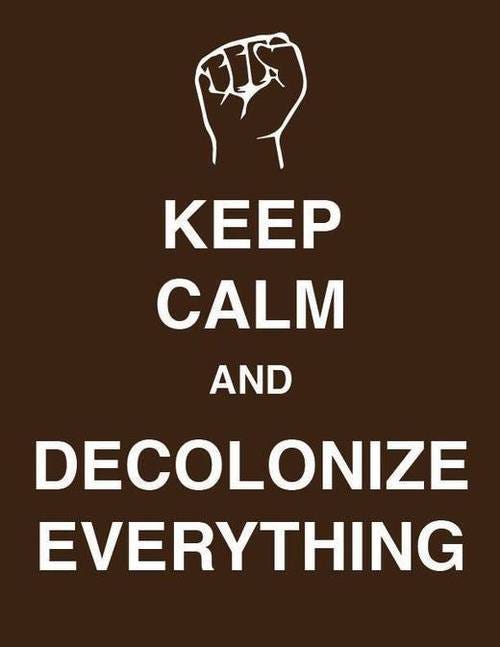MUS 358: Music in World Cultures
TR 8:30-9:50 AM Room: CLS 250 + Discussion Section
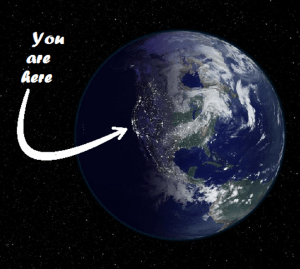 Beyond humanly organized sound, music is a tool to think with. The different ways in which humans use and talk about music can teach us much about ourselves and each other. In this class, you will learn how people raised in a variety of cultures produce and perceive music-dance as well as what concepts scholars have developed to understand these expressions more generally. Beyond exposing you to musics that you may not be familiar with, my goal is for you to apply the concepts you learn here to think critically about the multiple types of cultural performances you experience in your own lives. This course fulfills the IC (International Cultures) Multicultural Requirement.
Beyond humanly organized sound, music is a tool to think with. The different ways in which humans use and talk about music can teach us much about ourselves and each other. In this class, you will learn how people raised in a variety of cultures produce and perceive music-dance as well as what concepts scholars have developed to understand these expressions more generally. Beyond exposing you to musics that you may not be familiar with, my goal is for you to apply the concepts you learn here to think critically about the multiple types of cultural performances you experience in your own lives. This course fulfills the IC (International Cultures) Multicultural Requirement.
All reading and listening materials will be made available through the Canvas course site. Online quizzes during class means that you will need some type of smart device like a phone or laptop.
T 2:00-3:20 PM, plus half-hour sectional based on interest
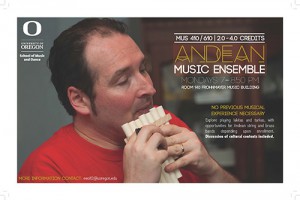 One intellectual current within ethnomusicology is the idea of bi-musicality, or the ability to be fluent in more than one musical system. This course emphasizes the practice of music-dance from a specific region/culture and asks students to reflect on how this practice may compare with the musical systems they already have experience with. Students will be asked to take an embodied approach in learning. At the end of the term, students will share what they have learned with others through an end-of-term presentation. Students who are interested in taking the class for additional credit (beyond 2.0 credits) are required to do additional work such as write an end-of-term research paper or produce a creative project related to region in question.
One intellectual current within ethnomusicology is the idea of bi-musicality, or the ability to be fluent in more than one musical system. This course emphasizes the practice of music-dance from a specific region/culture and asks students to reflect on how this practice may compare with the musical systems they already have experience with. Students will be asked to take an embodied approach in learning. At the end of the term, students will share what they have learned with others through an end-of-term presentation. Students who are interested in taking the class for additional credit (beyond 2.0 credits) are required to do additional work such as write an end-of-term research paper or produce a creative project related to region in question.
This term is dedicated to learning about the music-dance traditions of the South Central Andes, a region in which I have spent time doing field work. Several of these traditions use wind and percussion instruments that are relatively easily learned (lakitas/panpipes and tarkas/duct flutes), and everyone will learn a tune in these ensembles. It may be possible to explore two other traditions, the Andean string orchestra (quena/guitar/mandolin/flute/violin/charango/accordion) and the Andean brass band (trumpet/baritone/tuba/clarinet/ sax/trombone), depending upon what skills students bring with them to the class. All students will be expected to sing and perform basic dance steps. No prior musical experience necessary.

 Ethnomusicology is often defined as “the study of music in/as culture,” but what does that mean? This class begins with a brief overview of the history of the discipline (Rice) from its origins in U.S. cultural anthropology and German comparative musicology. We will then explore the key concepts one senior ethnomusicologist (Turino) has developed over the course of his career to understand musics as diverse as those found in fiestas patronales in the Andes, Bira ceremonies in Zimbabwe, and contra dances in the Midwest. Finally, we delve into a full-length ethnography to appreciate what an in-depth fieldwork study can produce. Graduate students participating in the class will be assigned additional readings (including a textbook with an overview of critical theory), class preps, and more intensive writing projects. This course fulfills the IC (International Cultures) Multicultural Requirement.
Ethnomusicology is often defined as “the study of music in/as culture,” but what does that mean? This class begins with a brief overview of the history of the discipline (Rice) from its origins in U.S. cultural anthropology and German comparative musicology. We will then explore the key concepts one senior ethnomusicologist (Turino) has developed over the course of his career to understand musics as diverse as those found in fiestas patronales in the Andes, Bira ceremonies in Zimbabwe, and contra dances in the Midwest. Finally, we delve into a full-length ethnography to appreciate what an in-depth fieldwork study can produce. Graduate students participating in the class will be assigned additional readings (including a textbook with an overview of critical theory), class preps, and more intensive writing projects. This course fulfills the IC (International Cultures) Multicultural Requirement.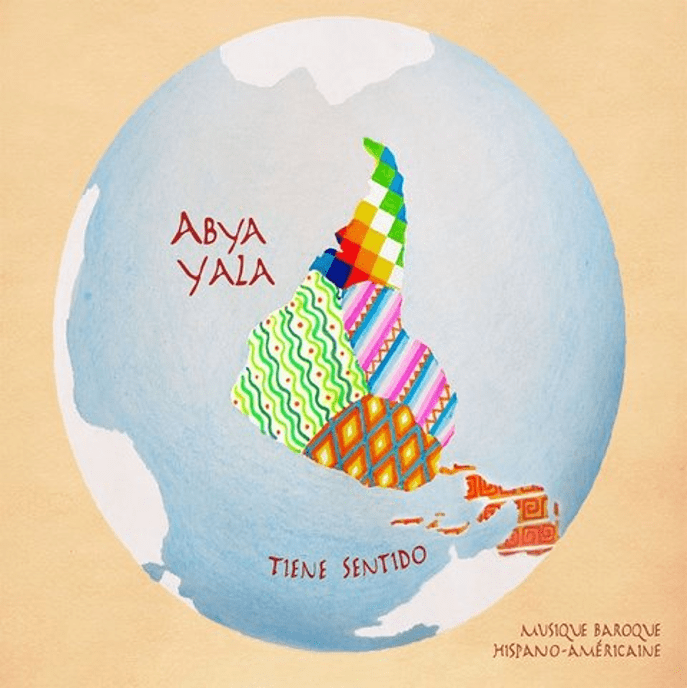 The Americas is a broad geographic expanse covering a range of cultures that is impossible to cover in-depth in a single academic term. There are ideas, however, that can help us bring important aspects of these cultures together: colonialism, processes of cultural exchange, and modernity. We will study these ideas through the music and cultures of at least three countries in the Americas (Brazil, Mexico, and Peru). No musical experience is necessary, but students will be asked to think through listening examples to understand why different musics sound the way they do. While we focus on three regions, the ideas are applicable throughout the Americas, including the United States. This course is designed to fulfill a Cultural Literacy Requirement.
The Americas is a broad geographic expanse covering a range of cultures that is impossible to cover in-depth in a single academic term. There are ideas, however, that can help us bring important aspects of these cultures together: colonialism, processes of cultural exchange, and modernity. We will study these ideas through the music and cultures of at least three countries in the Americas (Brazil, Mexico, and Peru). No musical experience is necessary, but students will be asked to think through listening examples to understand why different musics sound the way they do. While we focus on three regions, the ideas are applicable throughout the Americas, including the United States. This course is designed to fulfill a Cultural Literacy Requirement. General class description: One intellectual current within ethnomusicology is the idea of bi-musicality, or the ability to be fluent in more than one musical system. This course emphasizes the practice of music-dance from a specific region/culture and asks students to reflect on how this practice may compare with the musical systems they already have experience with. Students will be asked to take an embodied approach in learning. At the end of the term, students will share what they have learned with others through an end-of-term presentation. Students who may be interested in taking the class for additional credit (beyond 2.0 credits) can arrange to do additional work such as write an end-of-term research paper or produce a creative project related to region in question.
General class description: One intellectual current within ethnomusicology is the idea of bi-musicality, or the ability to be fluent in more than one musical system. This course emphasizes the practice of music-dance from a specific region/culture and asks students to reflect on how this practice may compare with the musical systems they already have experience with. Students will be asked to take an embodied approach in learning. At the end of the term, students will share what they have learned with others through an end-of-term presentation. Students who may be interested in taking the class for additional credit (beyond 2.0 credits) can arrange to do additional work such as write an end-of-term research paper or produce a creative project related to region in question.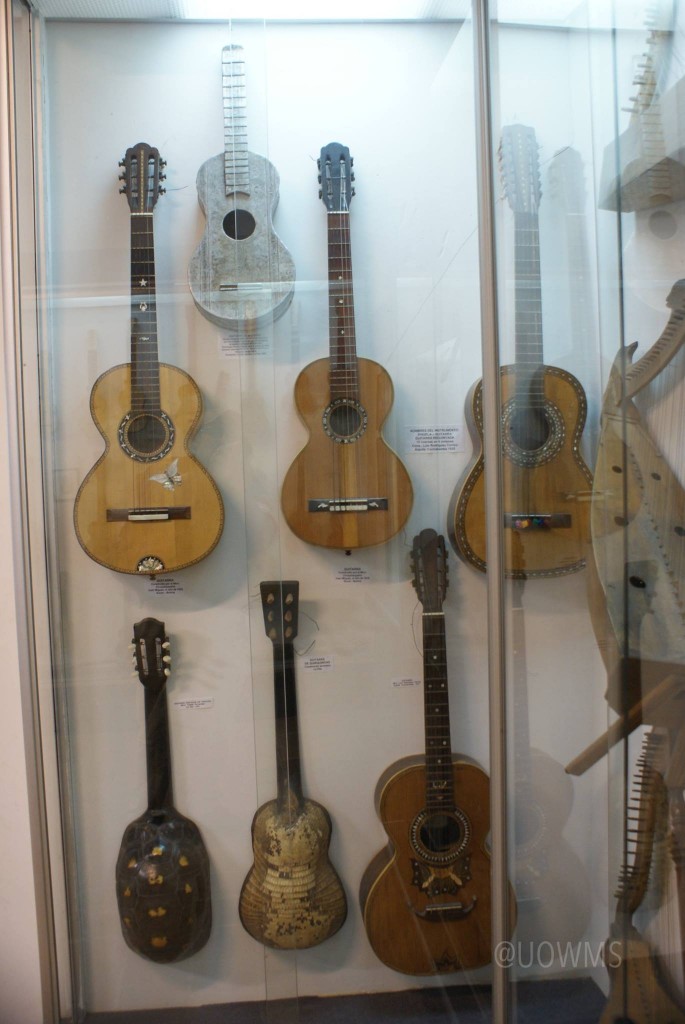 Musical instruments are tools that humans have created to shape their sound environments. They reflect the cultural values that communities of humans share. In this class, we will examine these tools, seeking to understand how they work: mechanically, aesthetically, and socially. We will also explore how and why scholars have studied musical instruments, even taking the time to build some. Questions include: why have some musical instruments become icons of a nation? How should we classify the vast number of instruments in the world? What does it mean for instruments to circulate around the world? Students will have the opportunity to research an instrument of their choice more thoroughly. This course is designed to fulfill the Global Perspectives category of the Cultural Literacy Core Education requirement.
Musical instruments are tools that humans have created to shape their sound environments. They reflect the cultural values that communities of humans share. In this class, we will examine these tools, seeking to understand how they work: mechanically, aesthetically, and socially. We will also explore how and why scholars have studied musical instruments, even taking the time to build some. Questions include: why have some musical instruments become icons of a nation? How should we classify the vast number of instruments in the world? What does it mean for instruments to circulate around the world? Students will have the opportunity to research an instrument of their choice more thoroughly. This course is designed to fulfill the Global Perspectives category of the Cultural Literacy Core Education requirement.